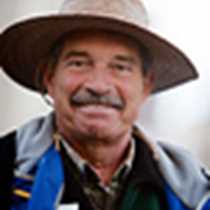Los Islotes and Espiritu Santo Island, Baja California Sur, Mexico
The islets are a good name for these reddish ignumbrite pieces of rock, surrounded by deep water. Home to a large number of birds (turkey vultures, magnificent frigate birds, brown pelicans, a couple of peregrine falcons as well as to many brown boobies and blue-footed boobies). It is also home to 400-600 California sea lions that we visited it this morning. Interesting Zodiac tours led us around the island, to watch, hear and smell a gamut of animal fragrances, especially that of the sea lions. This rookery is well studied, and every year the new animals are marked with visible plastic tags, which allow the biologists from the local university of Baja California Sur to know their movements, migrations, etc…
The water was clear and the fish were stupendous. Many invertebrates were to be seen by the snorkelers, as well as dozens of diving pelicans, going after their daily breakfast: fish, probably sardines! And the playful sea lions (the young ones, of course), partook in the play and showed off their swimming abilities to the snorkelers. Lunch was taken en route south to the southwestern tip of the island, where in the early afternoon we landed at Bahia Bonananza. Here we did kayaking and hiking into the forest of cardones, those typical giants of the cactus family (the largest of the cacti: up to 95 feet high). Lovely mariolas were seen in full bloom. Some land birds were seen, as well as the two endemic mammals on the island: the antelope ground squirrel and the black (in reality, dark brown) jackrabbit. And, of course, in the process of overturning stones, we found interesting scorpions.
As soon as the day was finishing, we had a delicious barbecue and Aztec stories by Adrian Cerda, one of our naturalists, by the bonfire light.
The islets are a good name for these reddish ignumbrite pieces of rock, surrounded by deep water. Home to a large number of birds (turkey vultures, magnificent frigate birds, brown pelicans, a couple of peregrine falcons as well as to many brown boobies and blue-footed boobies). It is also home to 400-600 California sea lions that we visited it this morning. Interesting Zodiac tours led us around the island, to watch, hear and smell a gamut of animal fragrances, especially that of the sea lions. This rookery is well studied, and every year the new animals are marked with visible plastic tags, which allow the biologists from the local university of Baja California Sur to know their movements, migrations, etc…
The water was clear and the fish were stupendous. Many invertebrates were to be seen by the snorkelers, as well as dozens of diving pelicans, going after their daily breakfast: fish, probably sardines! And the playful sea lions (the young ones, of course), partook in the play and showed off their swimming abilities to the snorkelers. Lunch was taken en route south to the southwestern tip of the island, where in the early afternoon we landed at Bahia Bonananza. Here we did kayaking and hiking into the forest of cardones, those typical giants of the cactus family (the largest of the cacti: up to 95 feet high). Lovely mariolas were seen in full bloom. Some land birds were seen, as well as the two endemic mammals on the island: the antelope ground squirrel and the black (in reality, dark brown) jackrabbit. And, of course, in the process of overturning stones, we found interesting scorpions.
As soon as the day was finishing, we had a delicious barbecue and Aztec stories by Adrian Cerda, one of our naturalists, by the bonfire light.




